10 garden path ideas for walkways that elevate your outdoor space
Experts explain their best garden path ideas, from winding trails to modern walkways to allow you to appreciate your space
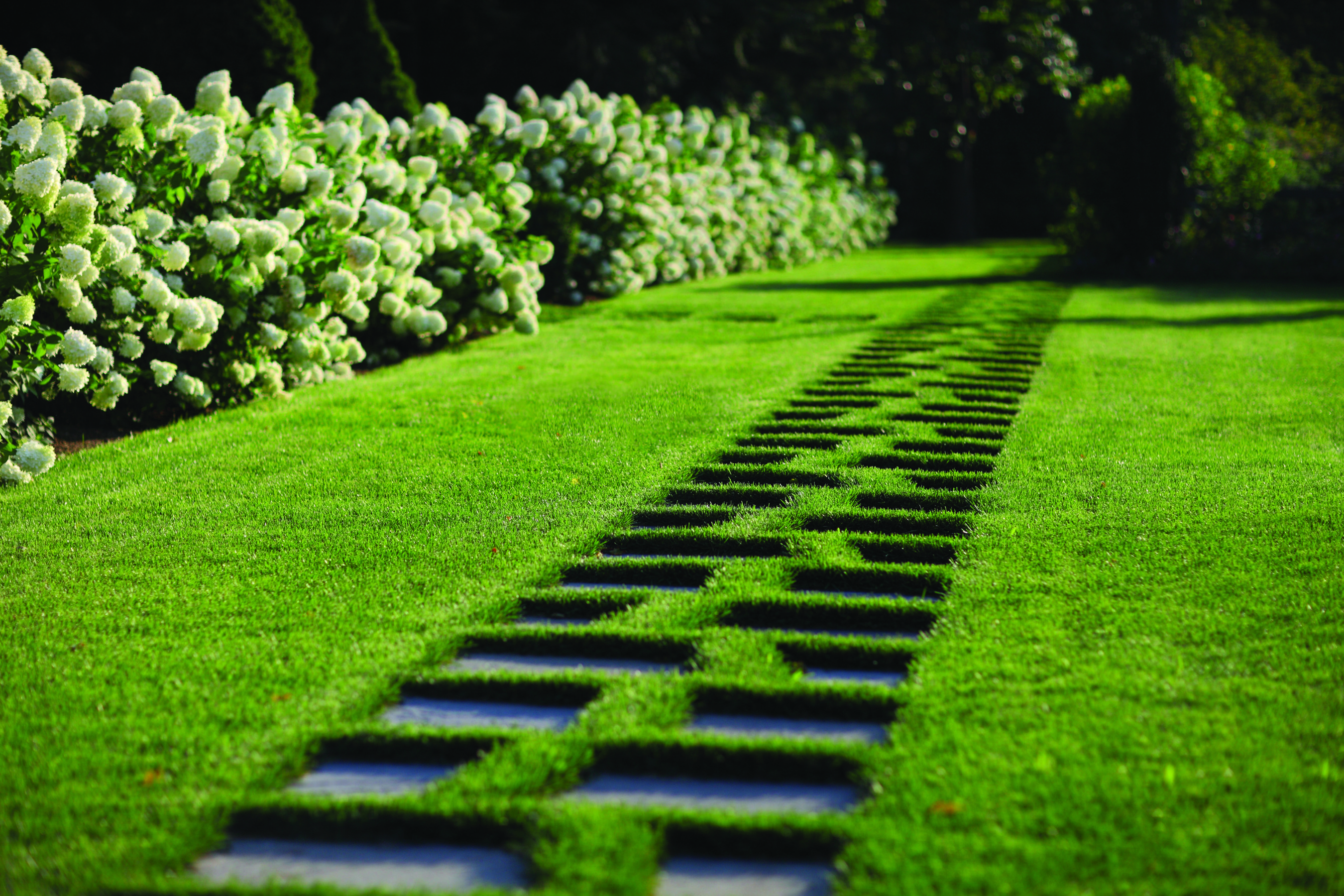
Focusing on garden path ideas offers an opportunity to invite visitors to your backyard to go on a journey. Maybe it’s to the fire pit, or a bench, or an incredible view, or maybe it’s simply to immerse themselves in your outdoor space. So you’ll want to set the tone, perhaps with romantic planting, or rhythmically placed paving, or with a curve to invite discovery, or with sharp, straight lines for drama.
There are many options for walkway design, but the award-winning landscape designer Claudia de Yong advises sticking to organic materials. “Gravel, sand and river rock feel best under the feet - both for animals and humans,” she says. She also recommends planting up to the edge of your path and - happily - suggests letting “a few weeds find their way into the path. This gives the garden an 'old', organic feeling”.
And so because we know that landscaping is about so much more than just the lawn, here is some inspiration for the pathways, too.
Garden path ideas
1. HARNESS NATURE TO CREATE STEPPING STONES
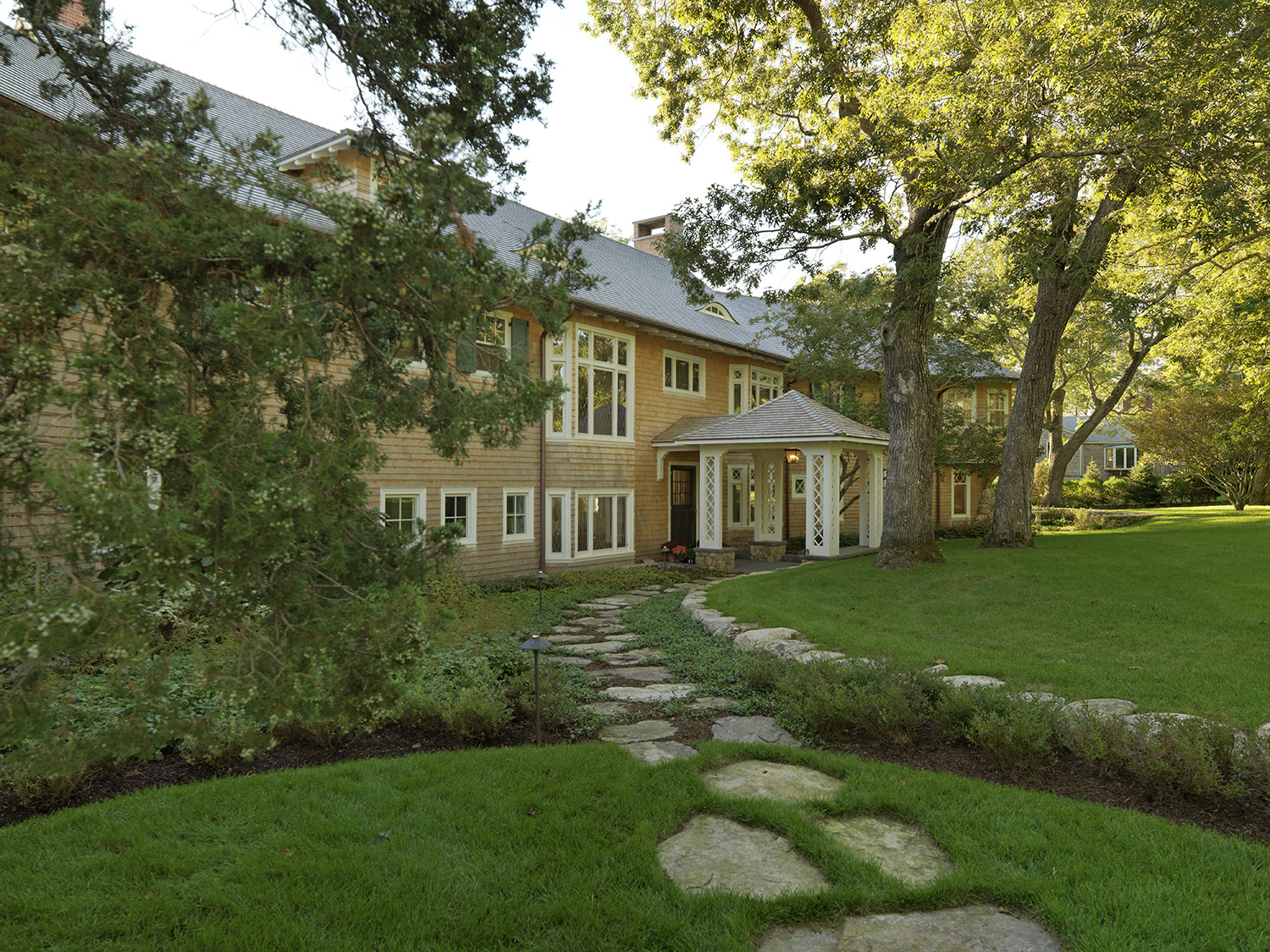
If you want your path to blend seamlessly into nature, consider a trail of fieldstones (ie, rocks found near the surface of the earth), laid out as stepping stones, as in this garden in Boston.
Clara Batchelor, founder of CBA Landscape Architects in Massachusetts, explains that they give a yard “a softer look, and allow for lawn and ground cover to grow between them and integrate them further into the garden”.
What’s more, she adds, because the stones are not cut, they have the advantage of “an aged appearance from the beginning”. Alongside the stepping stones here, Clare planted Hostas in the flower beds, which are very easy to grow and require little maintenance, she promises (she warns, however, that they’re the favorite food of rabbits and deer).
Clare recommends this design for secondary paths or “where I want the garden to be the dominant visual feature - the visual impact of a solid walkway could be overly strong.”
The Livingetc newsletters are your inside source for what’s shaping interiors now - and what’s next. Discover trend forecasts, smart style ideas, and curated shopping inspiration that brings design to life. Subscribe today and stay ahead of the curve.
2. CREATE PORTALS FOR ESCAPISM
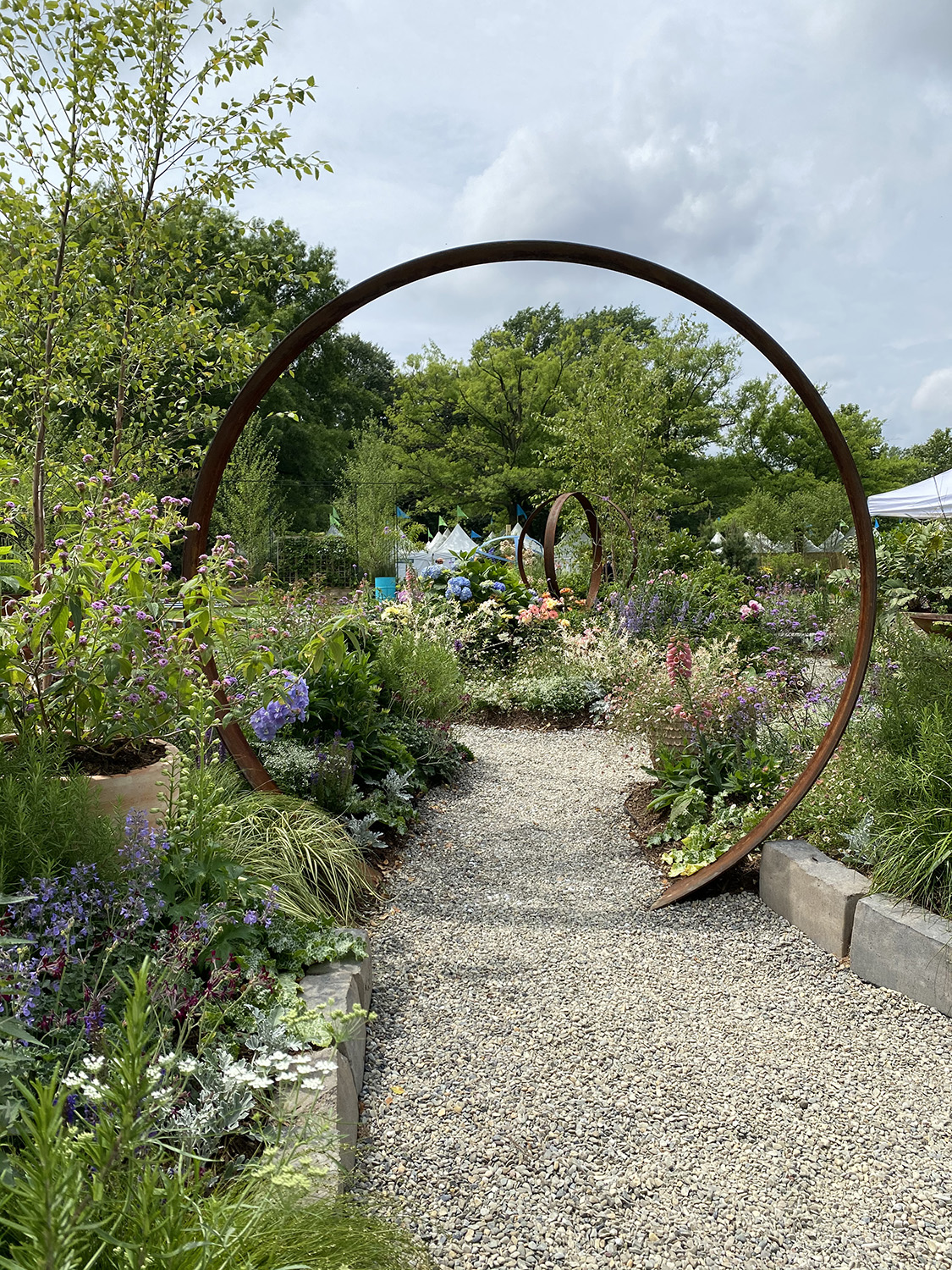
“When you walk into a garden, there must be a clear sense that you are entering a healing space,” says the New York City-based garden designer Wambui Ippolito. Her clients have included Martha Steward and David Letterman, and she is at the forefront of the garden trend for wellness outdoors. In this award-winning garden at last year’s Philadelphia Flower Show, she designed a thin corten steel circle, which mimics Chinese moon gates, she explains.
“Visitors feel as though they are entering the space through a portal - but not one that is heavy or overbearing,” Wambui says.
The narrow, winding gravel paths are designed to give visitors a sense of discovery: “I don’t like straight lines in a garden,” she says. The smooth, multi-colored River Jack gravel on the pathways is therapeutic underfoot, as well as great for drainage, and the simplicity of the stone is offset with beds buzzing with life.
She created depth by building up moundings and planting different textures, and adopted wildlife gardening principles by using a soothing multi-textured palette of pollinator-attracting plants. “I wanted birds, bees and butterflies to find a home. A garden should be a true experience of Nature for all her children.”
3. MAKE A WALKWAY ON WATER
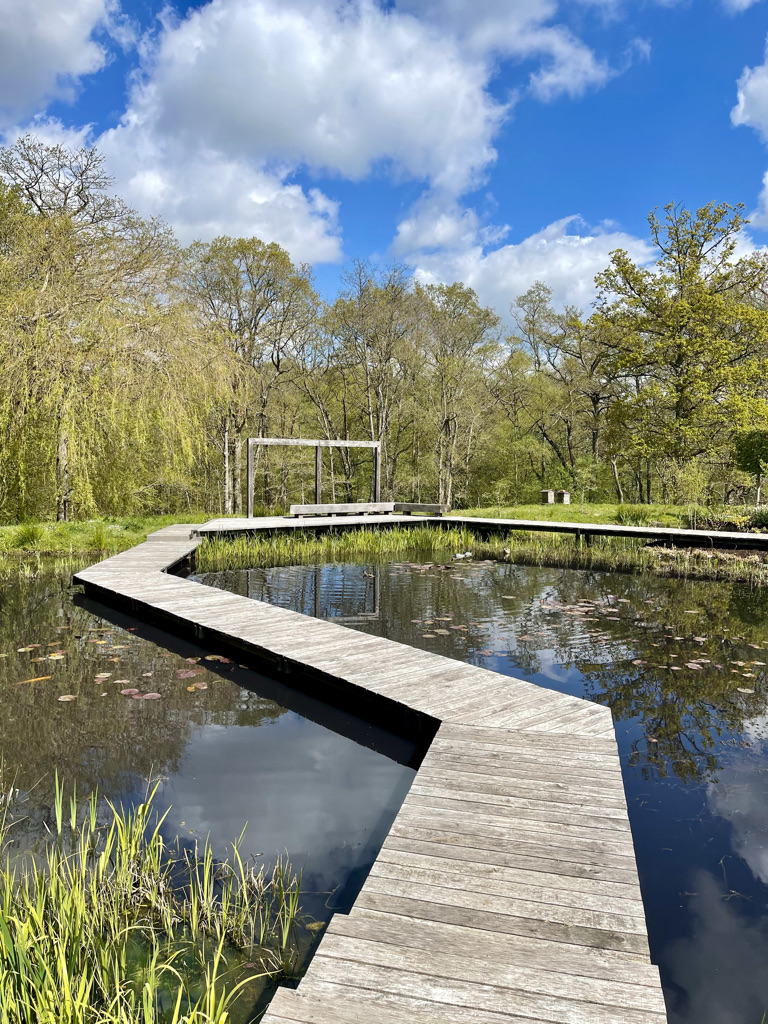
Why walk around a pond when you can walk over it? In this garden in Kent, Britain, Marian Boswall, the Award-winning landscape architect and author of Sustainable Garden (published by Frances Lincoln), built the wooden walkway in order to encourage people “to come close to the water to experience all the different light and life there”. This works particularly well for narrow gardens in which you still want to include a water feature.
The boardwalk links the water to the garden and the woodland beyond, for which the long oak seat serves as a kind of frame. The path is made with oak because it is in an oak woodland, she explains, adding that, “I would like it one day to decay back to being a part of the land.”
She recommends using materials that will age well without chemical treatment: “A wood like oak will silver beautifully whilst maintaining its strength.” She advises against plastic composites, tropical hardwoods and chemically-treated softwoods. The gently zigzagging nature of the boardwalk is a reminder to slow down. “The way is as important as the destination. Taking time is a luxury and necessity for our well being.”
4. CHOOSE BLACK LOCUST WOOD FOR DURABILITY
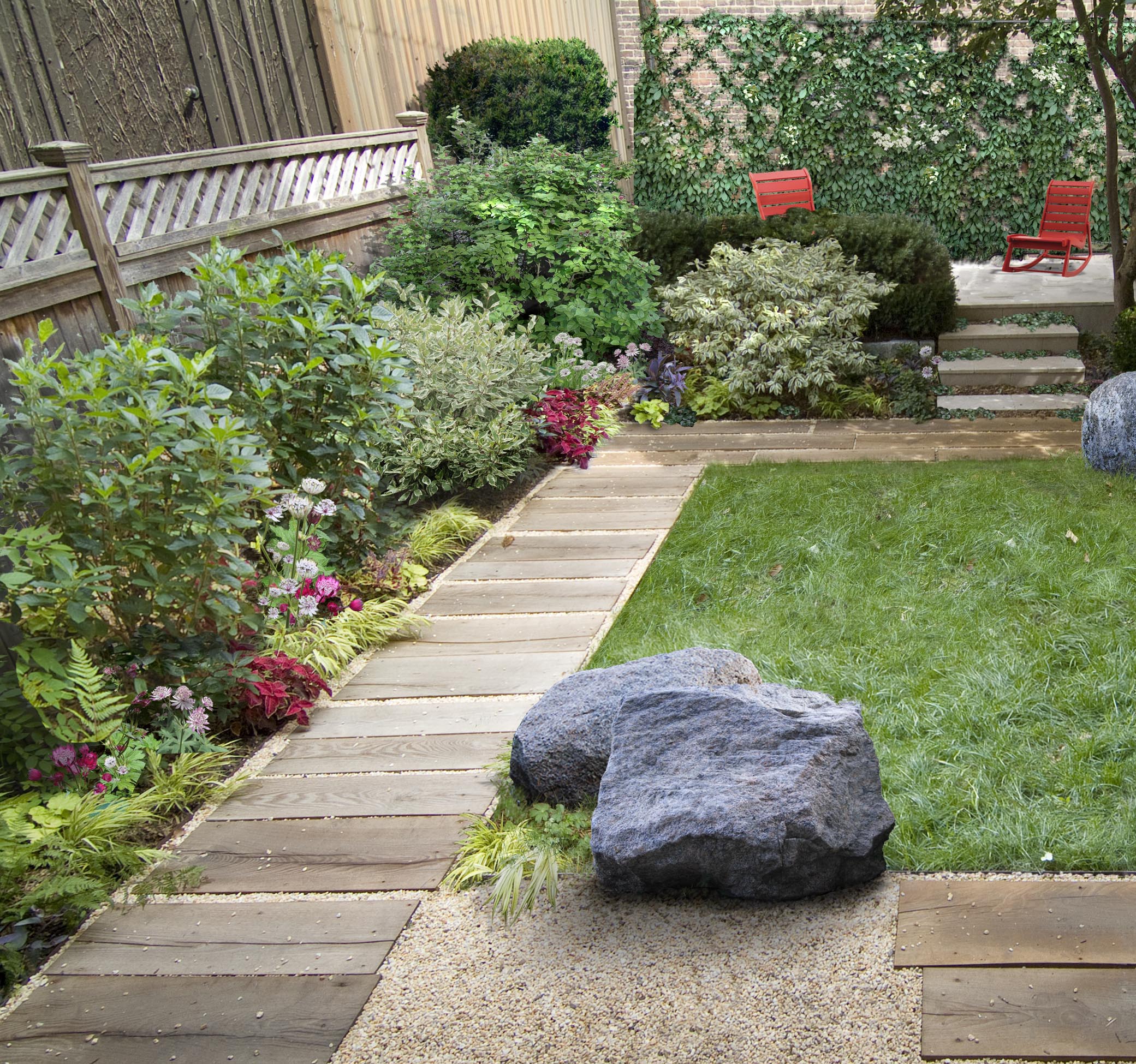
“For hundreds of years farmers have been using black locust wood for fence posts as it’s rot- and insect-resistant,” explains New York city-based landscape designer Todd Haiman. And now that the harvesting of Ipe wood is not deemed sustainable, black locust - which is native to the US and Europe - offers a cost-effective, domestically grown alternative that “is stronger than red oak”, promises Todd, so ideal for decking.
In this New York City garden, the black locust wood offered a permeable, sustainable solution to a pre-existing drainage issue (the planks are 1.25” thick), and, adds Todd, “While you could stain or finish this wood as any other, no outdoor finishes are needed to preserve it.”
With such a dense, strong wood, it can be hard to work with, he warns. “You’ll need to pre-drill any screw holes and your saw blades will wear out a bit faster.” It’s worth the effort - its outdoor life expectancy is about 30 to 40 years, making it a great choice for garden boardwalks, and because you don’t need to treat the wood, it will gradually evolve from a nutty, light brown to a silvery gray. Whatever the age, it will add a warm, organic feel to a garden.
5. REPURPOSE FALLEN TREES
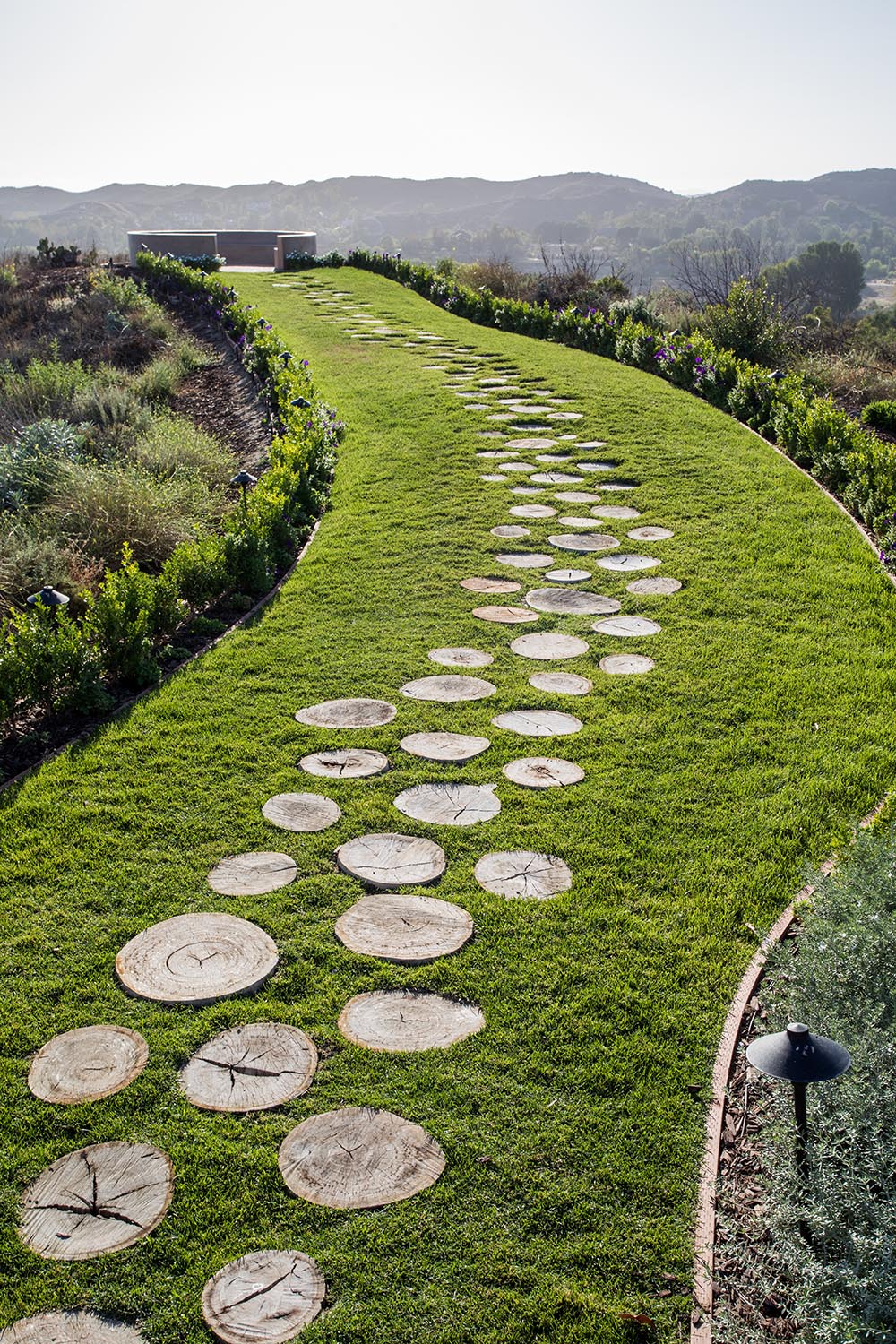
With this new construction in Coto De Caza, California, a large, dead oak tree stood exactly where the home was to be built - though no-one was keen to see it go. The California-based landscape architect Richard Lusk, who specializes in large-scale projects, came up with the idea that one of the pathways in this five-acre Mediterranean-style garden could be made with wooden stepping pads sliced from the tree.
After all, Richard explains, “Wood would feel warmer on bare feet than cold stone.” The pathway is rather special - the wooden slices, surrounded by trim, lush grass, lead meanderingly to the end of a peninsula, which juts out above the valley below, where the owner goes for a coffee alone in the morning, and to drink wine with friends around the fire pit in the evening. “The clients love the idea that the old tree is still there with them, leading them to their peninsula sanctuary,” says Richard.
6. CONSIDER COTTAGECORE BRICKWORK
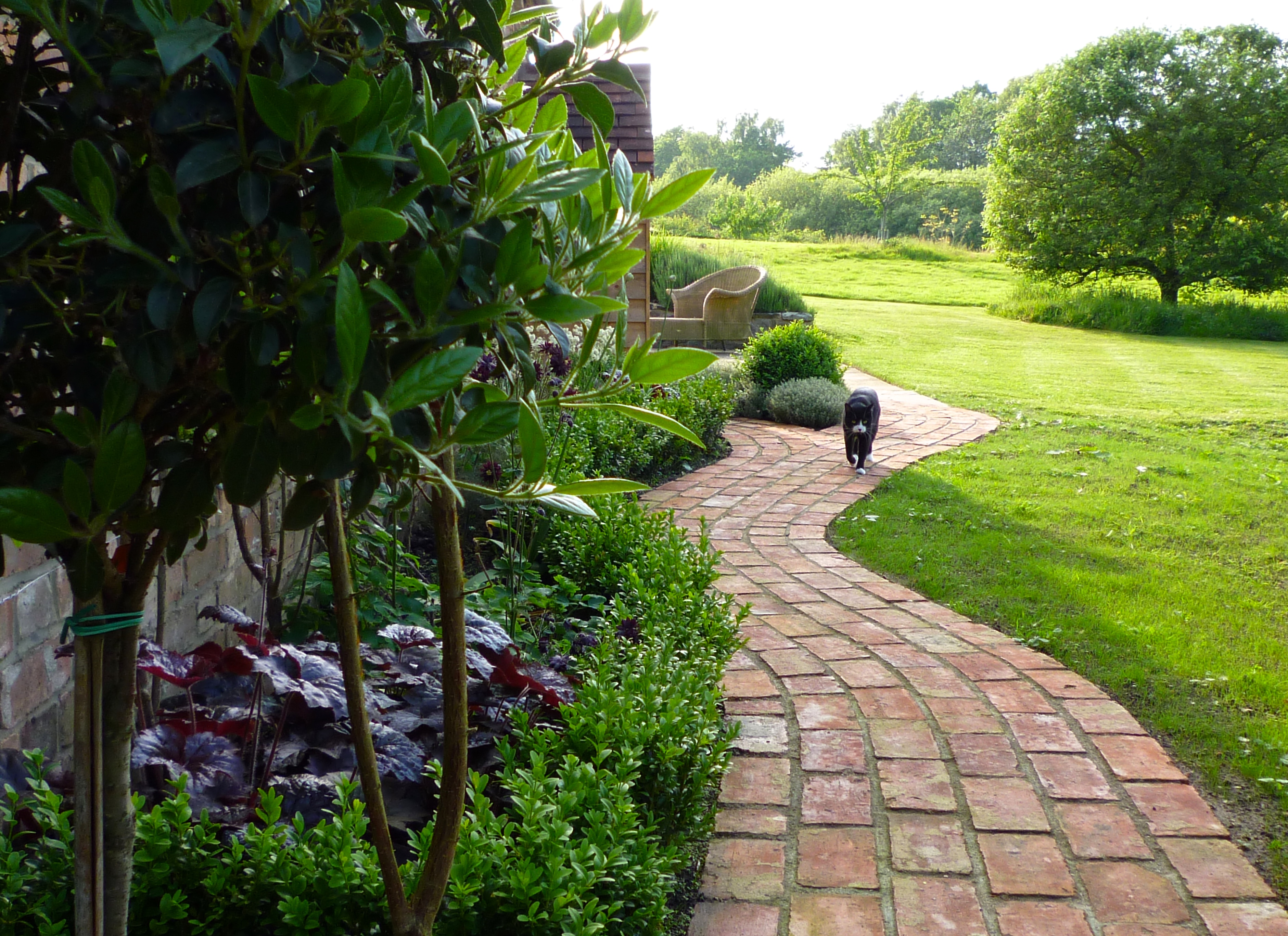
Sometimes the best design solution is to create something that looks as if it’s always been there. In this Sussex garden in the English countryside, the award-winning garden designer Claudia de Yong used reclaimed bricks to lay a curved path around the quaint 18th century brick and timber cottage - this leads to a custom-designed greenhouse.
In the absence of huge amounts of space to play with, Claudia says she “chose a curved path to create a sense of width - narrow, straight paths tend to accentuate thinner strips of land”. What’s more, the winding path lends “a more casual, gentle look”, and - especially with very level ground - “a curved path can make the journey more interesting.”
It is important to choose a brick that is frost-resistant, advises Claudia. “A standard decorative or house brick will potentially soak up and retain ground- or rainwater and when this freezes, it expands, and will eventually disintegrate.” And, she adds, any sort of curve in landscaping will be more costly, since more cuts in the materials and more labor will be required.
To add a little romance, she recommends plants such as Lavender or Nepeta that not only spill over, softening the edges, but give fragrance and flowers. “You can also use low-growing, mat-forming perennials and grasses mixed with other plants for a softer natural look, or large topiary-style shrubs at either end of the path to create more formality.”
7. FOCUS ON THE JOURNEY
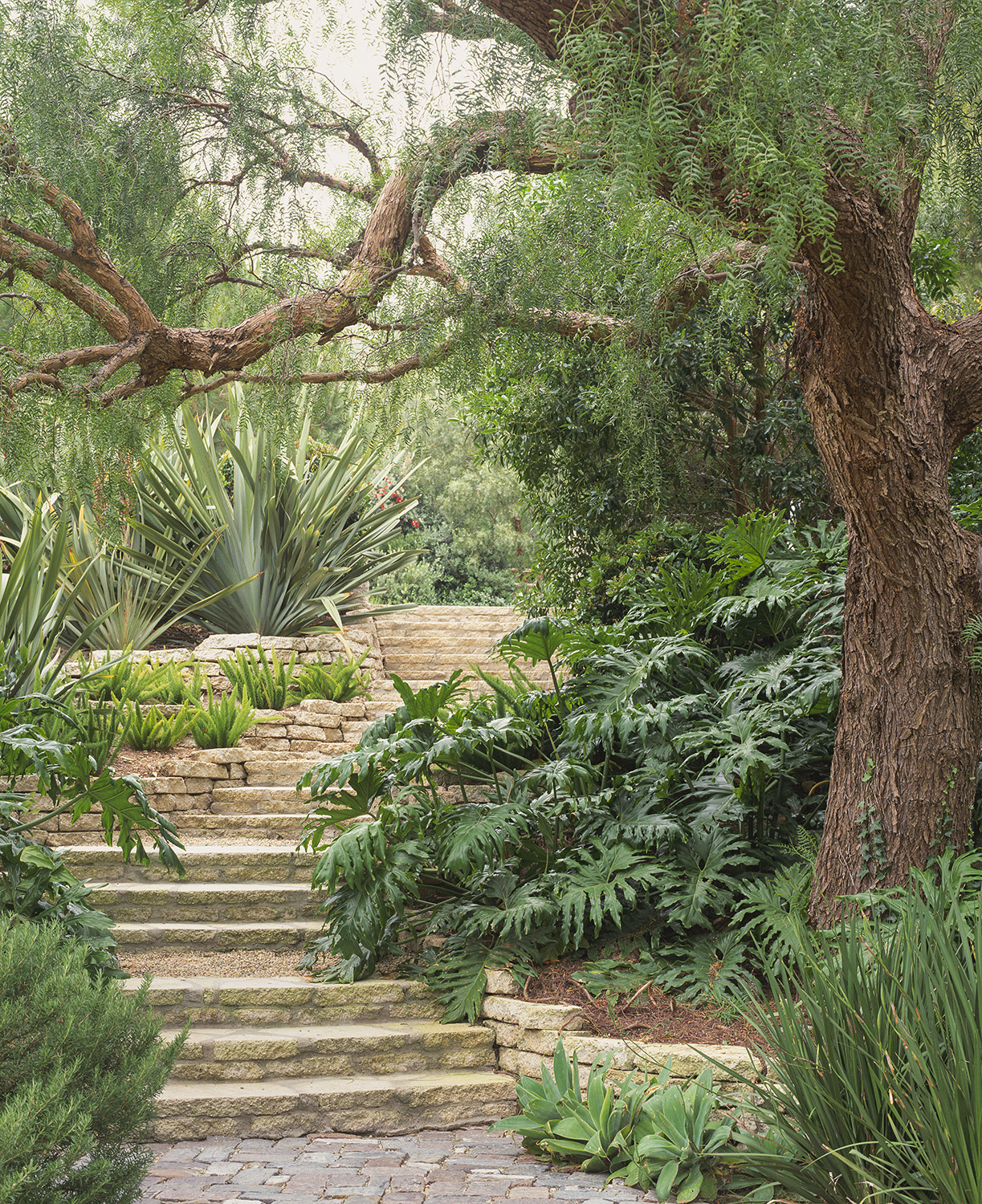
While of course the design and materials of a pathway are key, the acclaimed Southern California-based landscape architect Scott Shrader reminds us to remember the details, too.
“Just as important is the experience,” he explains in his coffee table book The Art of Outdoor Living (Rizzoli). “There is a sequence and a rhythm to an exterior pathway.” To move people through the space, he says, “I give them little moments of difference and beauty to capture their interest and attention along the way.” Thus, there is the aromatic rosemary at the bottom of the path, the cheeky succulents straying out into the steps, the sprays of ground palms majestically rising up, the lure of the pretty flowers beyond.
This path, winding its way around an existing California pepper tree down to the front of the house, is part of a five-acre Malibu estate that once belonged to the American artist Ron Davis, who commissioned Frank Gehry to build an exaggerated corrugated-iron shed in the early 1970s.
It’s now the home of actor Patrick Dempsey and his family, with Scott overseeing the gardens for the past two decades. “Planting a garden is very much like creating an interior,” he explains, “except with plants we have to plan for the future. My goal is to plant a garden once and then allow it to mature, becoming what it wants to become, with the hope that it will last for generations.”
8. CREATE VISUAL RHYTHM WITH EMBEDDED PAVING

For strong visual impact, the award-winning landscape architect and author of Designing a Vision, Janice Parker, based in Greenwich, Connecticut, has made embedded paving on grass paths one of her signatures.
For this private residence in Fairfield County, Parker has connected the property’s kitchen gardens with perfectly laid pale paving stones, which are then banded with lush grass in a sharply geometric pattern. The result, says Parker, is the creation of ”visual rhythm in the landscape”.
Precision is key here - both in the angular lay of the stones and the parallel positioning of the path with the limelight hydrangea hedge. The effect is high drama and real sophistication. Parker’s variations on the theme have included paths made out of triangular stones that have been laid into squares or rectangles, and narrower paths that crisscross over lawns like a naughts and crosses grid, all with gorgeously rich grass banding around the stones. The result is simply spectacular.
9. SHADE YOUR PATH WITH A PERGOLA
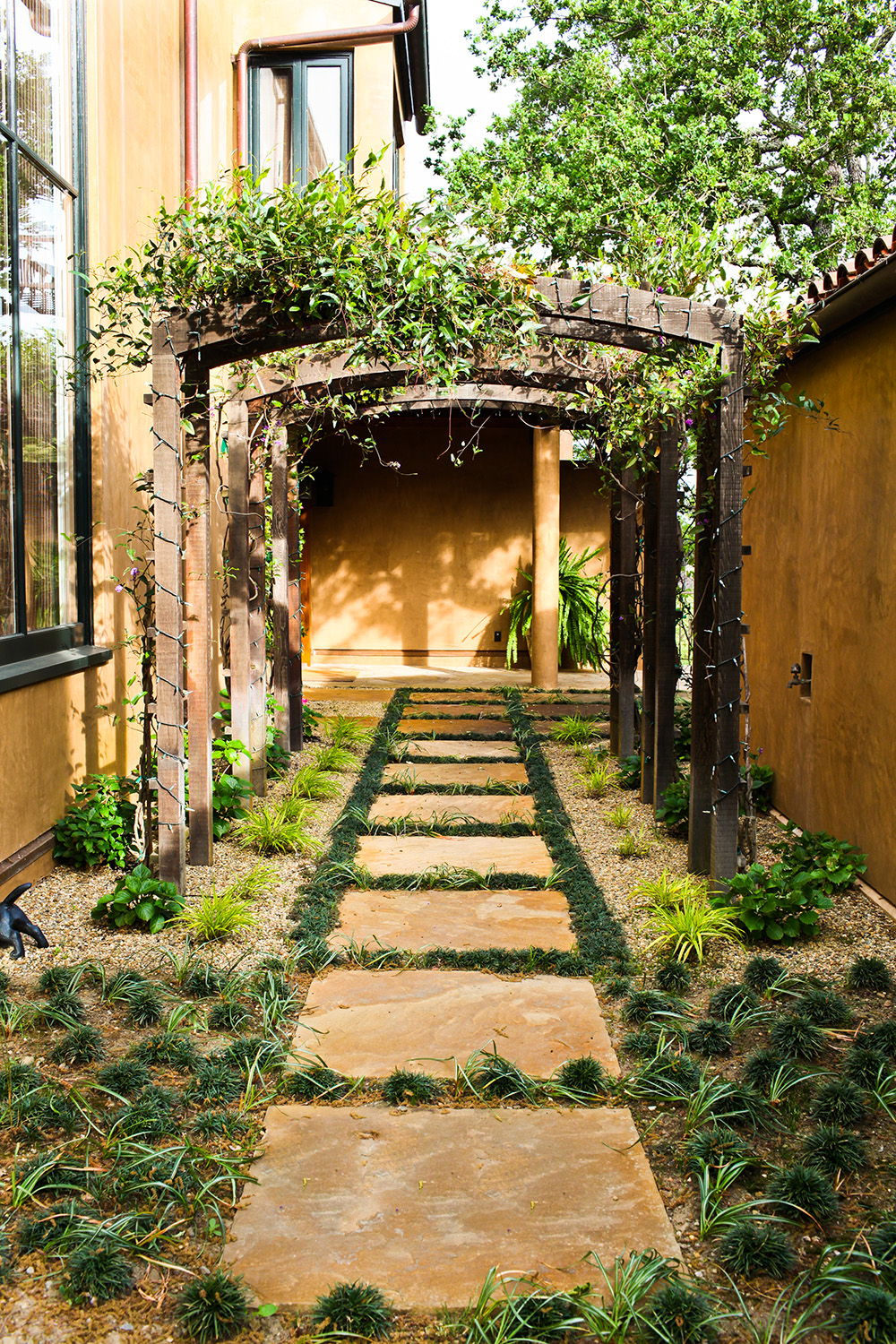
Doesn’t it always feel a bit special to walk through a leafy pergola? It’s also practical, offering very welcome shade, as well as another opportunity for more foliage (and who wouldn’t take that?).
This sunny, Mediterranean-style walkway in San Francisco, designed by Carter Tighe Leeming + Kajiwara, features paving made from cut Arizona flagstones, with hydrangeas growing on the sides, and hardenbergia on the trellis. There’s a satisfying cohesiveness to the design, with the Arizona stones complementing the color of the house’s external walls, and the square shape of the stone echoed in the proportions of the pergola.
At night time, that sense of magic continues with sparkly garden lighting entwined around the trellis.
10. GO MODERN WITH METAL
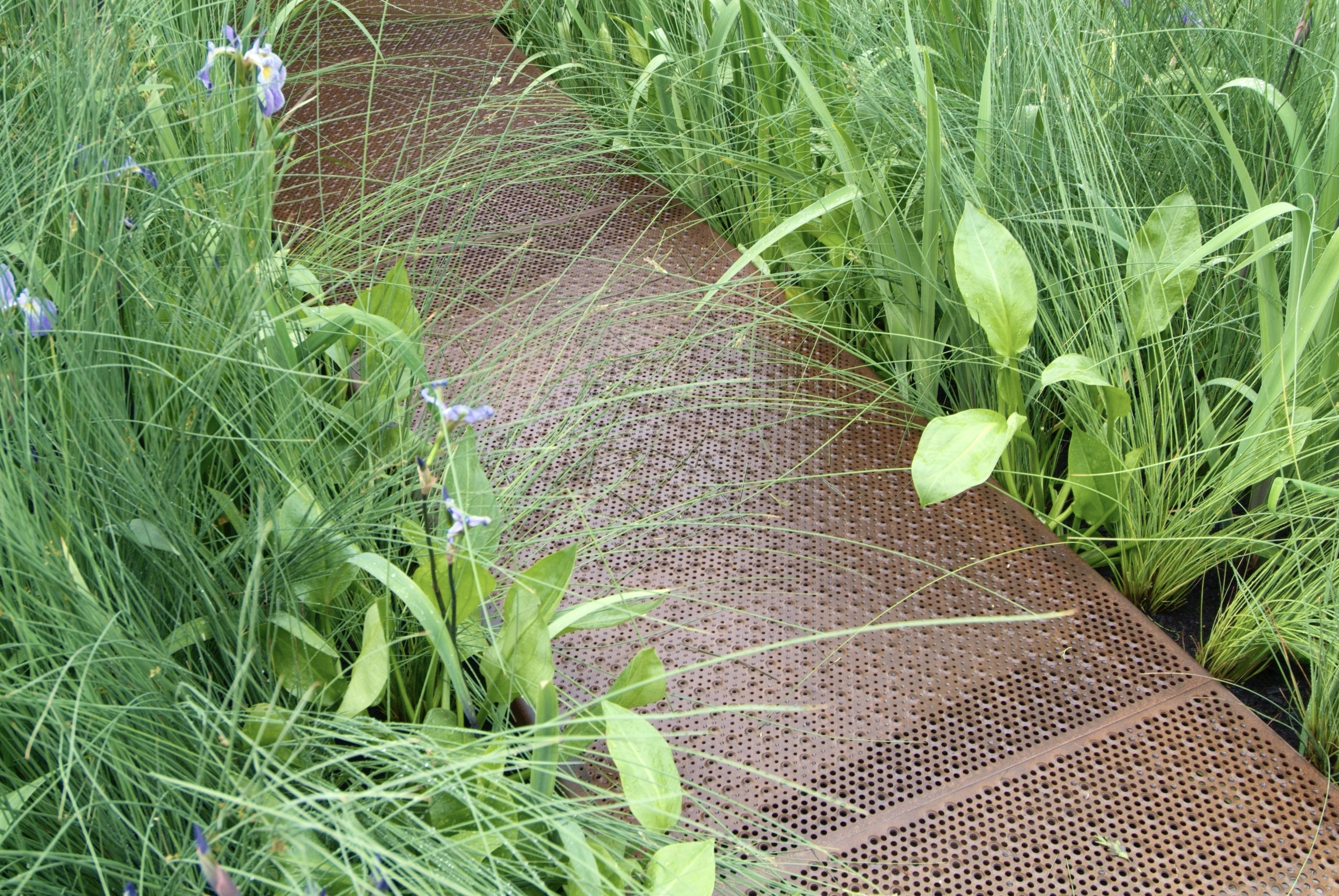
For a truly modern look, consider a metal pathway. Here, the New York City-based landscape designer Todd Haiman recommends a perforated corten steel walkway for, which he spotted at a recent Chelsea Flower Show in London.
Usefully, it’s also leads to a very low maintenance garden. “Corten steel, with its distinctive orange-brown color, was designed to eliminate the need for painting,” Todd explains. It also serves as a minimalist tonic to offset anything more wild and naturalistic. The perforations add a graphic detail, as well as serving to prevent slip and water accumulation.
If you want to go even cleaner, or if the color of corten is not your thing, Todd suggests using stainless steel, “but it is recommended that you powder-coat or paint it every few years to eliminate the possibility of rusting.” In any case, a metal path works best when raised above the grade, or on gravel. “The path should also not be used close to a house, so as not to track the rust into the residence,” he adds.
How wide should a garden path be?
Claudia de Yong, the British garden designer, recommends that a 3 foot-wide walkway is adequate for pushing a mower or pulling a wheel barrow. You could go even wider if you wanted to create a path for two people to walk side by side - for this she recommends a width of around 4 feet.
Before going ahead with any permanent hard landscaping, it’s always wise, she advises, “to experiment with widths along with shapes by marking out a path using a hose or some string.”
Fleur Britten is a well-respected journalist who for years was the Senior Features Editor at Sunday Times Style. She is known as one of the smartest lifestyle journalists around, revered for being able to decode trends and report on new zeitgeists as they happen. She now writes for the Telegraph, Livingetc, Vogue, The Times, Harper's Bazaar and the Guardian.